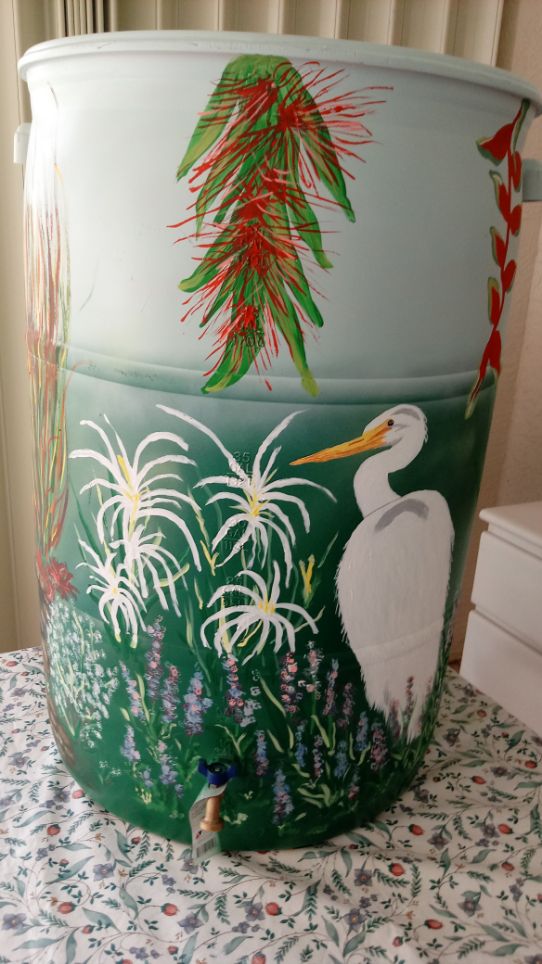Florida Friendly Landscaping Principle #8 – Reduce Stormwater Runoff
April 1, 2021
Click Here for full article in the Cape Coral Breeze
Florida receives a considerable amount of rainfall, especially during the summer. The storm water can remain and soak in where it falls, evaporate or wash away. This latter occurrence is known as stormwater runoff. Why should we be concerned about runoff? After all, it is just water, right? Not quite. Let’s look at residential areas as an example.
Rainfall that flows off the property does so without the benefit of the natural filtering of impurities that trees, turf, ground cover and other permeable surfaces such as paved walkways provide. Therefore, the flow, and the various sediment and pollutants gathered up along the way, work their way, unchecked, into sewer systems, aquifers, streams, canals, rivers and other waterways.
No matter where we live, whether or not in the vicinity of a body of water, we all live in a watershed and our local actions have considerable impact “downstream.” Until I began looking into the negative impact runoff has on the environment, I never gave much thought to it. I now recognize that, as homeowners, we can help reduce the amount of runoff on our properties by asking a few questions, a handful of which are shared below, and then taking mitigating action.
Are grass clippings allowed to remain on the lawn? After mowing, if you notice that portions have migrated to your driveway or into the roadway, sweep or blow the clippings back into the landscape, where they will add beneficial nutrients for turf health during decomposition. The same goes for leaves and other yard debris. Otherwise, the vegetation and the nutrients they contain, i.e., nitrogen and phosphorus, will get caught up in the flow. And, as we know, these two nutrients have been known to feed algal blooms which lead to fish kills.
How are downspouts positioned? Are they positioned so water remains in the landscape and away from the driveway? By making simple adjustments to spouting, rainwater can flow into landscaped areas for use by vegetation. You could also consider placing a rain barrel or cistern in the area to capture downspout water, which would serve to harvest the rainwater for future use.
If you observe that an area accumulates too much water in a storm’s aftermath, think about turning the area into a rain garden, making certain that the native or other Florida friendly plants you choose for inclusion not only enjoy wet feet but are also drought tolerant. With proper selection and a focus on right plant/right place you will better ensure that, once established, the plants will prove hardy with no special care or use of fertilizers and pesticides normally needed. A win-win for both your wallet and the environment!
And speaking of fertilizers and pesticides, do you use only as needed and according to label directions? When applying more than necessary for either, the excess nutrients that fertilizers contain and chemical content of pesticides have to go somewhere and when it rains that somewhere is into our waterways.
Is animal waste disposed of properly or left where deposited? And, if you have a septic system is it well-maintained? Animal waste and leakage from a malfunctioning system contribute bacteria and harmful microorganisms to the runoff mix. Therefore, be sure to pick up waste when walking your dog and get your septic system inspected every couple of years.
So, there you have it, a very brief introduction to the impact of stormwater runoff on the environment and actions homeowners can take to lessen that impact. For additional information regarding Florida Friendly Landscaping and the nine principles, visit https://ffl.ifas.ufl.edu.
Janetta Fox is a Lee County Master Gardener volunteer and member of the Garden Club of Cape Coral.
Sources:
Stormwater runoff. (n.d.). UF/IFAS University of Florida Gardening Solutions. Retrieved from https://gardeningsolutions.ifas.ufl.edu/care/florida-friendly-landscapes/stormwater-runoff.html
Watersheds. (n.d.) Southwest Florida Water Management District. Retrieved from https://www.swfwmd.state.fl.us/ watersheds


